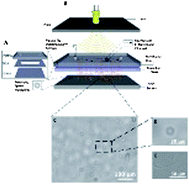5.3 million American couples of reproductive age (9%) are affected by infertility, among which male factors account for up to 50% of cases, which necessitates the identification of parameters defining sperm quality, including sperm count and motility. In vitrofertilization (IVF) with or without intra cytoplasmic sperm injection (ICSI) has become the most widely used assisted reproductive technology (ART) in modern clinical practice to overcome male infertility challenges. One of the obstacles of IVF and ICSI lies in identifying and isolating the most motile and presumably healthiest sperm from semen samples that have low sperm counts (oligozoospermia) and/or low sperm motility (oligospermaesthenia). Microfluidic systems have shown potential to sort sperm with flow systems. However, the small field of view (FOV) of conventional microscopes commonly used to image sperm motion presents challenges in tracking a large number of sperm cells simultaneously. To address this challenge, we have integrated a lensless charge-coupled device (CCD) with a microfluidic chip to enable wide FOV and automatic recording as the sperm move inside a microfluidic channel. The integrated system enables the sorting and tracking of a population of sperm that have been placed in a microfluidic channel. This channel can be monitored in both horizontal and vertical configuration similar to a swim-up column method used clinically. Sperm motilities can be quantified by tracing the shadow paths for individual sperm. Moreover, as the sperm are sorted by swimming from the inlet towards the outlet of a microfluidic channel, motile sperm that reach the outlet can be extracted from the channel at the end of the process. This technology can lead to methods to evaluate each sperm individually in terms of motility response in a wide field of view, which could prove especially useful, when working with oligozoospermic or oligospermaesthenic samples, in which the most motile sperm need to be isolated from a pool of small number of sperm.

You have access to this article
 Please wait while we load your content...
Something went wrong. Try again?
Please wait while we load your content...
Something went wrong. Try again?


 Please wait while we load your content...
Please wait while we load your content...